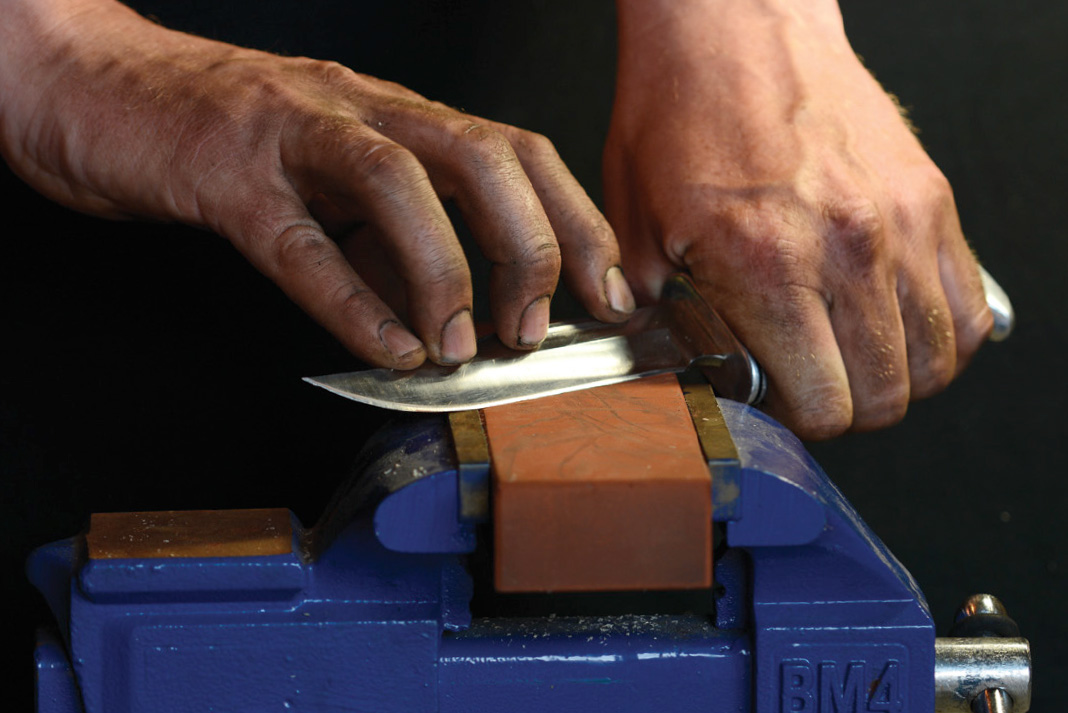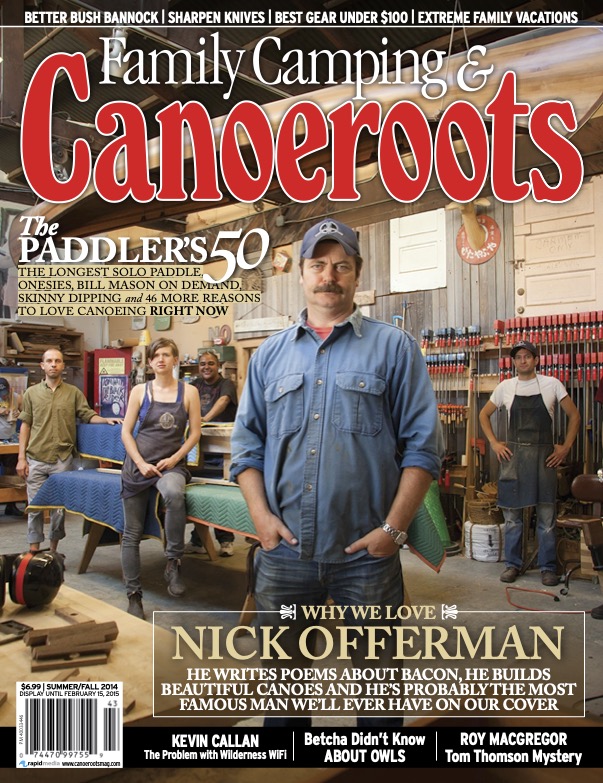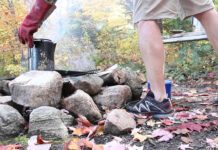No matter what type of knives you use for your adventures, it’s important to keep your blades well-honed. A sharp edge reduces the possibility of injury by reducing the amount of force required to cut. Less force means more accuracy.
The traditional way to sharpen a knife is to use a sharpening stone. Stones come in a variety of styles, sizes and materials, but each promises a good finish by removing minute quantities of metal from the blade.
Like sandpaper, stones also come in a variety of grits. If your blade is dull and heavily used, you may want to begin with a coarse grit stone, however, many people choose medium grit and use it exclusively.
The two most popular types of stones are whetstones and oilstones. If using a whetstone, soak it in clean water before use. If using an oilstone, spread a few drops of honing oil on it. In both cases, make sure the stone is wet at all times when in use.
Large stones should be placed on a solid surface. If sharpening a blade at home, a vice can be a handy tool to hold the stone in place, but in camp, the ground or a picnic table will be suitable. Small stones can be handheld for sharpening, but should still remain motionless—the best technique is to move your blade across the stone, not the other way around.
To find the correct angle to sharpen your blade, lay the flat side of the knife against the stone and tilt the blade until the cutting edge comes into contact with the stone. This is the angle you’ll sharpen at, also known as the bevel.
Use your free hand to gently guide the knife away from you and down the length of the stone. Imagine that you are slicing off a very thin sliver of the stone. You should hear a distinct sweeping sound.
If the knife blade is curved or if it’s longer than the stone is wide, you’ll also need to sweep the blade sideways, so the entire edge is sharpened evenly. Maintain the bevel by listening carefully to the sound—if you change the angle of the blade, the sound and resistance will change.

Repeat the motion 10 times on the same side. Then repeat 10 strokes on the other side. Depending on how dull your blade is, you may need to repeat this pattern several times.
A medium grit stone will leave micro-serrations in the steel that give it more edge surface and bite, perfect for performing general camp chores.
For whittling, skinning or shaving a beard, you’ll need to progress to a finer stone. Repeating the procedure with a fine stone will remove the micro-serrations left by the medium grit stone.
Finally, to polish the new edge of your blade, stroke the edge down a piece of scrap leather a dozen times.
The best way to test your handiwork is to hold up a sheet of paper and drag the knife across its edge. A sharp knife will slice the paper effortlessly. —Wolf Starchild









